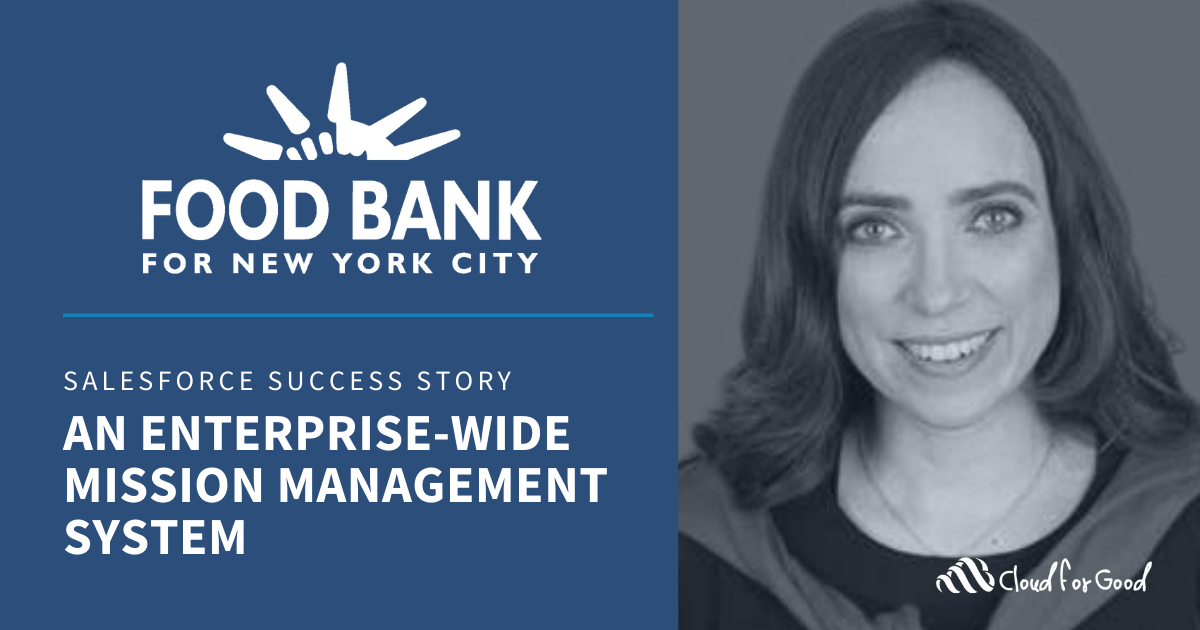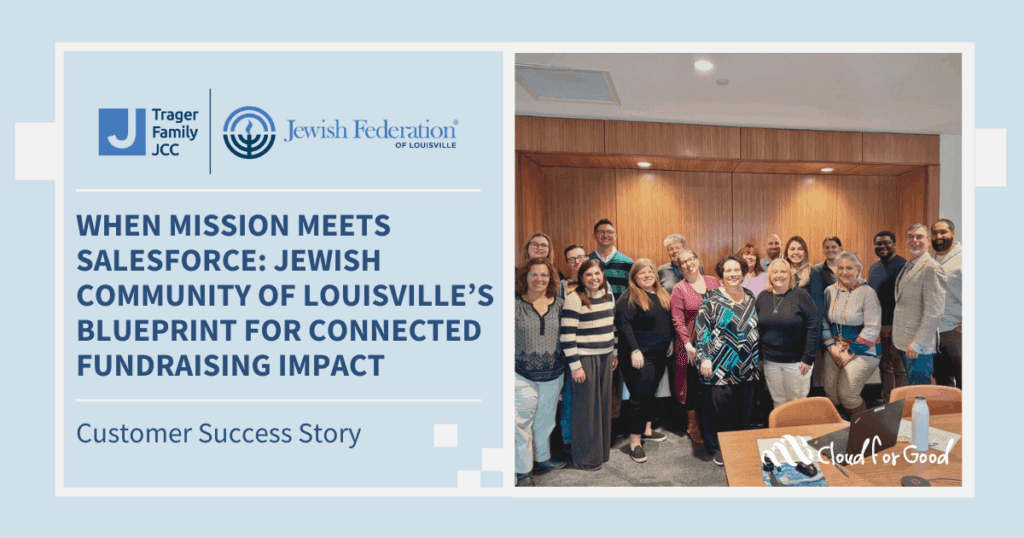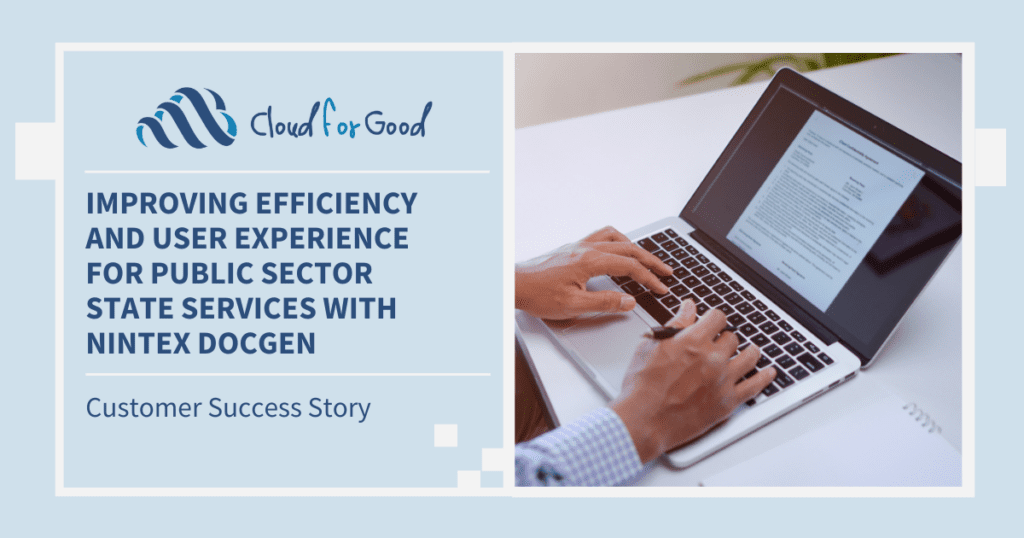An Enterprise-Wide Mission Management System
The Client
Food Bank For New York City has been New York City’s major hunger-relief organization throughout the five boroughs for more than 30 years. Nearly one in five New Yorkers relies on Food Bank for food and other resources. Food Bank takes a strategic, multifaceted approach that provides meals and builds capacity in the neediest communities, while raising awareness and engagement among all New Yorkers. Through its network of more than 1,000 charities and schools citywide, Food Bank provides meals for more than 64 million New Yorkers in need. Food Bank For New York City’s income support services, including food stamps (also known as SNAP) and free tax assistance for the working poor, put more than $150 million each year into the pockets of New Yorkers, helping them to afford food and achieve greater dignity and independence. In addition, Food Bank’s nutrition education programs and services empower more than 275,000 children, teens and adults to sustain a healthy diet on a low budget.
Challenges
Food Bank’s valuable constituent data had been held in a variety of disconnected systems, tools and databases, forcing staff to duplicate efforts and depriving the organization of a complete view of how it serves its constituents. For example, the Community Kitchen of West Harlem provides registered pantry clients with prepared meals and a supermarket-style food pantry. Registering and checking in clients in the pantry’s stand-alone database was slow and became a limiting factor on how many clients could be served in a single day. Additionally, Food Bank has several programs that provide direct services to clients and each program had a separate intake form that collected different information about clients. This created various issues, such as data duplication and difficulty reporting on clients.
Solutions
Food Bank For New York City contracted with Cloud for Good to create an enterprise-wide mission management system based on the Salesforce platform. “We chose to work with Cloud for Good based on their expansive knowledge of the nonprofit sector and their extensive portfolio of implementing Salesforce solutions on any scale. The team listened to our concerns and tailored solutions that have helped us not just meet, but exceed our goals,” said Alyssa Herman, Chief Development Officer. The goal of the system is to provide Food Bank with a complete view of how clients use the services provided by Food Bank. Additionally, Food Bank wants to analyze their data, use it to refer clients for different services for which they may be eligible, and develop new services to benefit clients.
Cloud for Good used the Salesforce platform to create a command center that allows the intake specialists at the pantry to quickly verify a client’s eligibility to shop and checks them in with a single button. To speed up the registration process, Flows were used to create an intake screen that captures the essential client details and prints a pantry identification card for the client.
Additionally, Cloud for Good worked with Food Bank’s Benefit Access team to recreate the E-PART tool in Salesforce using custom Visualforce pages, assisting clients with enrollment in the SNAP program. With data from the initial screening, Food Bank can target its follow ups to clients to ensure the client has received the benefits for which they are eligible, and intervene when mediation is necessary.
Cloud For Good also implemented Queues for Food Bank’s Benefit Access team in order to better engage clients as they come through the organization’s Community Kitchen. In doing so, the organization can track if a client chooses to engage in other services beyond food distribution, such as SNAP enrollment (food stamps). Overall, this provides Food Bank with better visibility and allows the organization to serve New Yorkers more effectively.
Results
Converting to Salesforce was a success for all program areas. “Our Salesforce implementation allowed us to widen our positive impact on New Yorkers. We are providing more services, reducing wait time, and saving money thanks to the centralized system and automation that was built into our application. Salesforce is our secret source,” stated Herman. The most significant organizational impact is in Food Bank’s ability to cross-refer clients among services. With the advent of new system, pantry clients without either health insurance or SNAP are identified during the intake process and Food Bank’s call center contacts them within a week to offer screenings. Tax clients who were identified as being eligible for SNAP or not having health insurance are referred to the call center for follow up. Benefit clients who encounter problems in the SNAP process are referred to benefits
mediation.
Additional highlights since deploying Salesforce:
- The average time to check in clients has decreased to under a minute and, as a result, the pantry can serve more clients during a daily shift.
- Food Bank can now track the date a client first received SNAP benefits and be more proactive in helping clients annually reapply for those benefits.
- Food Bank completed over 85,000 tax returns for the 2014 tax year and processed $141M in tax refunds, an increase over the 55,000 tax returns completed for the previous tax year.
- Food Bank can now see how clients are engaged in the different services provided.
Food Bank for New York City was featured in the session The Connected Nonprofit: Successful Enterprise-Wide Deployments (And Getting Buy-In) at Dreamforce 2015.





